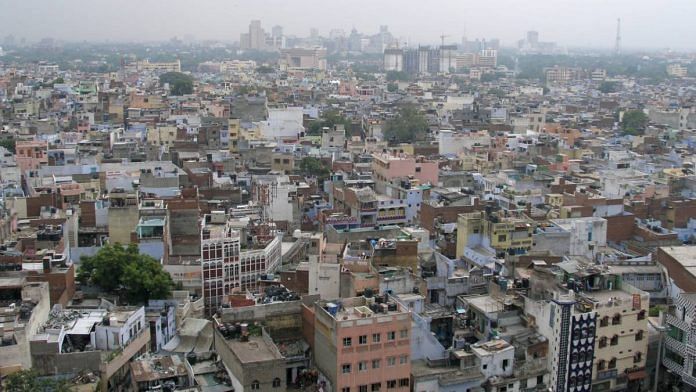Thank you dear subscribers, we are overwhelmed with your response.
Your Turn is a unique section from ThePrint featuring points of view from its subscribers. If you are a subscriber, have a point of view, please send it to us. If not, do subscribe here: https://theprint.in/
During a Vipashna camp I became friends with Tara Vati Sangwan of Shah Pur Jatt – an overcrowded, dirty and denuded urban village next to Asian Games Village, a quiet, green and clean urban residential colony.
Tara Vati came to Shahpur Jatt as a bride. She fell in love with that quiet,green and clean village with a simple lifestyle . Early in the morning she lit a mud stove while her mother-in-law tended to a cow and a buffalo and her husband got ready to go to their fields. At mid day she went to the fields and had lunch with her husband. On her way back she stopped at the village well, met her friends, all walked back with earthen pots filled to the brim, chattering softly while their colorful ghagras and dupattas swayed softly. She led a full life in Shah Pur Jat and gave birth to 4 children.
Then came 1980. The village lost its agricultural land as the government acquired it and got the Asian Games Village constructed there. The farmers became extremely rich but the village lost its soul. Ex-farmers got their humble homes converted to two or more 4 story buildings. One for the now fragmented family and the rest to rent to boutiques, designer studios, garment factories, independent embroiderers,dyers and pattern makers attracting the urban rich who spent their time and money there. The haphazard construction led to cramping and related problems.
The rich men of the village spent their days playing cards and women started attending Vipassana camps and workshops at Bhrham Kumari retreats.
Tara Vati cursed 1980 when her rural village became an urban village. It became overcrowded, dirty and denuded . Its clean air became smokey,the noise levels rose to intolerable limits.There was water shortage. Her daughters in law started wearing revealing, skimpy garments. Her sons started gambling and drinking. The youngsters were worse affected. They have acquired wrong habits like over speeding their cars and even using drugs.
Same was the story of most of her friends. As the social fabric of the village broke all adults and youngsters got affected. Lives of both males and females got altered. The area lost its rural characteristics but could never become as urban as the places it got surrounded by. The residents developed an inferiority complex in front of the so-called chic urban crowd. The youngsters started giving the address of the urban colony as their place of residence.There was an explosion of private english medium schools in the area. The original residents of the area try their level best that their children speak english – a sign of being from elite class in their eyes.They ordered pizzas and cakes from Zomato or other such outfits. They losi confidence in their own culture.
Conversion of rural villages to urban villages is quite a recent phenomenon. There were no such conversions throughout Indian history. Even now states like Uttar Pradesh, Meghalaya, Pondicherry, Arunachal Pradesh, Assam do not have the urban village in their geographical zoning .
In Haryana some rural villages became cities but there are no urban villages. In Kerala rural and urban are intermingled but each has retained its individuality. In Punjab villages within the city limits have retained their village-like characteristics and are not called urban villages.
Only Delhi the capital and Goa the smallest state of India have ‘Urban Villages’. However they are contrasting in every which way. In Goa urban villages are as old as 14th century but in Delhi they are as recent as 1980. For the 56 urban villages of Goa there are multiple development agencies while for 135 urban villages of Delhi there is one agency. In Goa they came into existence because of a decentralized approach to settlement but in Delhi it was conversion of rural villages to urban by acquiring agricultural land, convert it to palatial farm houses/ hot mix plants/ iron smelting units/aluminium anodizing units/welding factories/ soap factories/clothes dyeing factories/ tile making units/ Mika block units/ commercial hubs or even a Golf course or unauthorised colonies. Tourism is the main occupation for Goans in Urban villages while in Delhi its renting of their properties. Life in an urban village of goa can be rewarding while it is degenerating in urban villages of Delhi.
When a village loses its green agricultural land to brown non agricultural purposes,when the farmers become landless, when rural land is taken over for construction of urban residential colonies or other urban activities a village becomes an urban village. Residents acquire wealth by losing their land. From open rustic clean places they become denuded, dirty, overcrowded, chaotic places overtaken by disposable culture and cramped between new posh localities.
At present India has large cities, towns, rural villages and urban villages and the worst are the urban villages of Delhi .
These pieces are being published as they have been received – they have not been edited/fact-checked by ThePrint.


